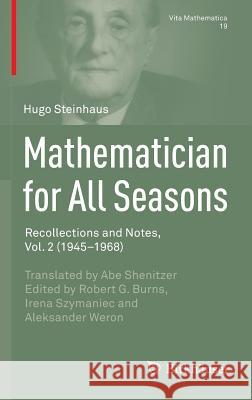Mathematician for All Seasons: Recollections and Notes, Vol. 2 (1945-1968) » książka
topmenu
Mathematician for All Seasons: Recollections and Notes, Vol. 2 (1945-1968)
ISBN-13: 9783319231013 / Angielski / Twarda / 2016 / 403 str.
Kategorie BISAC:
Wydawca:
Birkhauser
Seria wydawnicza:
Język:
Angielski
ISBN-13:
9783319231013
Rok wydania:
2016
Wydanie:
2016
Numer serii:
000115854
Ilość stron:
403
Waga:
0.75 kg
Wymiary:
23.39 x 15.6 x 2.39
Oprawa:
Twarda
Wolumenów:
01
Dodatkowe informacje:
Wydanie ilustrowane











